Battle of Abyssinia. Part of 2
After the defeat of the Ethiopian troops on the Northern Front, the Italian army began a march to Addis Ababa. At the same time, the left wing of the Badoglio army was provided by troops that were advancing in the central operational direction from Assab through the Danacle desert (various supplies and water were delivered aviation) On March 12, 1936, Italian troops occupied Sardo in this direction.
Italian Marshal Badoglio, who arrived in Dessie on April 23 with headquarters, launched an offensive in two columns - along the main (imperial) road and along the western road. Part of the 1 Army Corps on 1720 trucks followed the imperial path, followed by the main order of the Eritrean Corps; on the road through Doba, the Eritrean Brigade advanced on foot. Aviation covered the main forces of the expeditionary army, carrying out reconnaissance and security of ground forces.
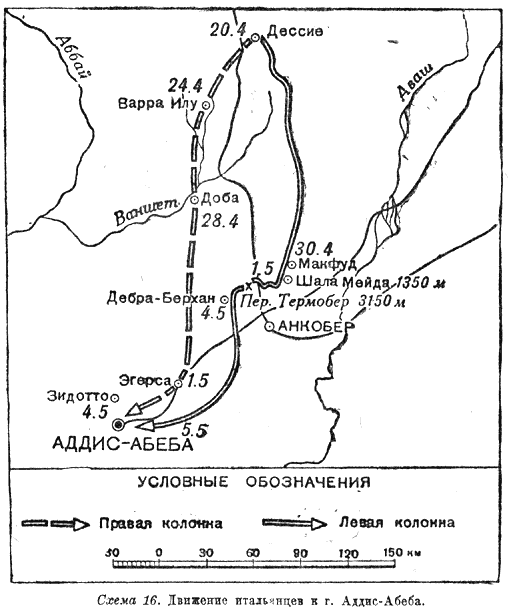
The Italian troops came out on April 26 and moved almost without meeting the resistance of the enemy. However, the mechanized column, because of the beginning of the rains, met a lot of problems that impeded movement. The Abyssinians themselves, although they had all the possibilities, did not create artificial roadblocks, which could slow down the Italian army even more. For example, the restoration of the destroyed section of the road at the Thermober Pass required about 36 hours. It took more than two days to spend on the convoy passing through this pass, as the trucks literally dragged on their hands. For this, it was necessary to convert not only sappers and colonial troops into the workers, and all the regular units and even sanitary units.
5 May 1936, Italian troops broke into Addis Ababa. The city was robbed and destroyed before the arrival of the Italians. When the authorities fled, some of the soldiers and the marauders who joined them staged a pogrom. Mussolini solemnly announced that henceforth Ethiopia is a colony of the Italian Empire. The Italians unleashed terror, mass executions of residents of the capital and the surrounding area continued for months. Separate detachments occupied the territory between Gallabat and Lake Tana, the region of Gojam and the headwaters of the Blue Nile.
Italian officers at the head of the native soldiers from Eritrea enter the capital of Ethiopia
Even before the fall of the capital, 2 May, the “king of kings” Haile Selassie, along with his family and retinue, went by train to Djibouti. He planned to defend the rights of his country in the League of Nations in Geneva. The British ship took the Ethiopian emperor to Palestine. As prince regent and commander-in-chief, he left his cousin, and one of the best Abyssinian commanders (he commanded the left flank of the Northern Front) race Imru. Ras Imru retreated to the south-west of the country and continued to resist until December 1936, when the Italians surrounded him and forced him to capitulate.
It should be noted that story with the flight of the emperor had a mixed opinion. The people were shocked, many believed that this was a betrayal of the country, that the emperor was no longer worthy of the throne. On the other hand, the death or captivity of the “king of kings”, which had a great symbolic significance for the country, was a symbol of Ethiopian statehood and independence, could have a negative effect on the population, breaking the will to resist.
The emperor organized the Provisional Government, which tried to organize a partisan movement and expel the invaders. After Britain entered the fight against Italy in June 1940, the British officially recognized Ethiopia as their ally. In January, 1941, Haile Selassie, arrived in Sudan, and then in Ethiopia, where, with the support of the British, he assembled an army. The Italians began to retreat, the British liberated almost all northern areas of Ethiopia by the end of April and continued the offensive against Addis Ababa. Having established control over a large part of Italian Somalia by the end of February, the British entered Ethiopia and, freeing the southern and eastern parts of the country, also headed for the capital and occupied it on 6 in April of the same year. 5 May 1941 Haile Selassie I ceremonially entered Addis Ababa. The surrender of the last Italian units and the ascension to the imperial throne, Haile Selassie, marked the restoration of Ethiopian independence.
Italian troops build a road in Abyssinia
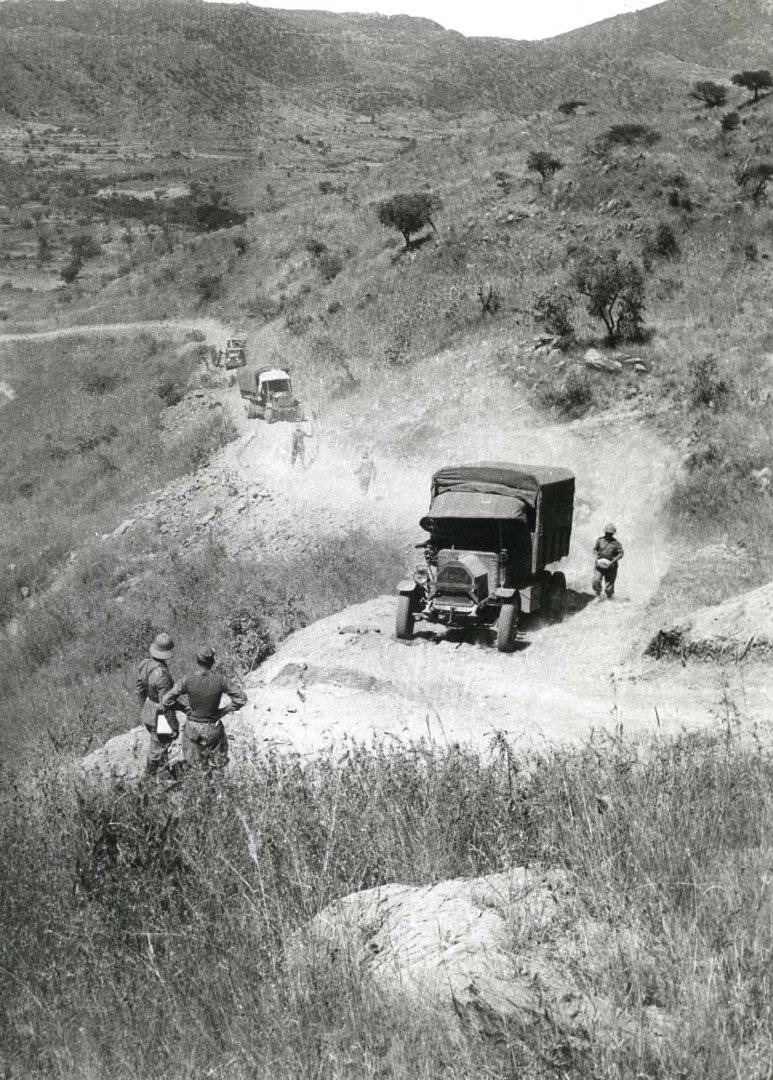
Situation on the Central and Southern Fronts
The Danakil group (about 10 thousand people) attacked the Central and Southern fronts on the Central Front and was supposed to provide their internal flanks. From the area of Moussa-Ali through the desert on Sardo and Dessie (Dessier) came the cavalry on camels and mountain artillery on camels. Provision of troops involved in aviation. March 12 Italians occupied Sardo and April 12 came to Dessie, taking it without a fight. Abyssinians have already left this city. Later Danakil group became part of the Northern Front. In fact, this group of troops from the slowness of the movement did not play any special role in the war, but was able to divert some of the enemy forces. The movement of the Italians in the central direction on Dessier and Magdal created a serious threat to the right wing of the Abyssinian Northern Front. This forced the Ethiopian emperor to hold large reserves in Dessie and Diredua.
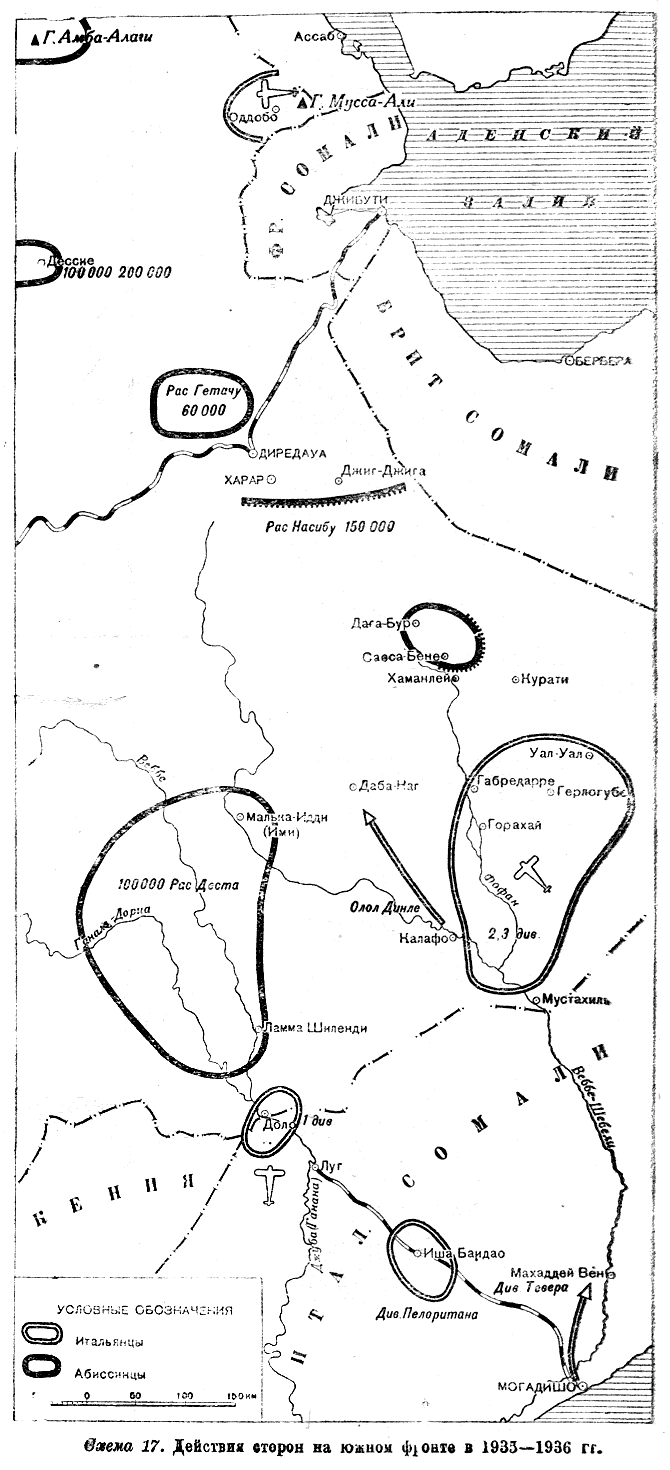
On the Southern Front, the commander of the Italian troops, General Graziani, received his task of defending Somalia and pinning the enemy on the 700 front, he decided to use offensive actions in October and November 1935. Using motorized and aviation units, the Italians deeply invaded the enemy’s territory, advancing in two directions - along the river valleys of the southern slope of the Somali range, along the rivers Fofan and Webbe. In December, 1935, the Italian troops reached the line of Gerlogube, Gorakhai, Dolo. The two Abyssinian armies withdrew: the troops of the race Nasibu strengthened in the area of Saesa-Bene, the Jig-Jig, and the race of Desta - north of Dolo.
A small amount of water in these areas hampered the conduct of hostilities. However, the Italians were in a better position: they used vehicles to deliver water and hydraulic equipment. Thus, a “water factory” was erected near Gorakhai, which gave thousands of liters of filtered water to 100 per day. As on the northern front, having occupied certain lines, the Italian troops were not active, tried to strengthen the rear, build communications (in fact, it was a “road war”). Among the colonial troops, there was ferment and desertion, with soldiers fleeing to Kenya and British Somalia.
Only in December, 1935 received significant reinforcements, Graziani continued the offensive. 12 January 1936. Italian troops went on the attack. In a three-day battle, the Italians defeated the army of race Desta, who planned to start a small war in Italian Somalia. The Abyssinians were attacked from the front and threatened to reach the flanks with Italian motorized and cavalry units, which led to their defeat. The Italian forces occupied a vast area west of Dolo during the pursuit of the enemy.
Thus, the attempt of the Abyssinians to organize a small war in Italian Somalia was prevented. The Abyssinian high command, concerned that the path to the capital through the lakes and Alat region was open, sent part of the operational reserve, intended to strengthen the Northern Front, to the south.
The commander of the Southern Front of Graziani, putting only a barrier in the direction of Alat, concentrated his main efforts on the right wing, on Harar. The Italians made a corresponding redeployment of forces. Meanwhile, Prince Nasibu, taking into account the unfavorable situation for the Ethiopian army that developed on the Northern Front, decided in March to go on the offensive in order to divert the attention of the enemy. The Turkish advisers Vehib Pasha and Faruk Bey, who were under the Abyssinian prince, were negative about this undertaking. They offered to retreat to the heights of Harar, to prepare them for defense, while simultaneously engaged in the reorganization and training of troops. And forward only small units to act on enemy communications. However, contrary to these sensible advice of the races, Nasibu launched an offensive by the main forces, planning to go around the enemy from the east and capture Gorahai in its rear. 13 April 1936. Abyssinian troops acted.
The Abyssinian army gathered for a long time, so the Italian agents easily guessed the enemy’s plan. Italian troops were ready. The movement of the Abyssinian army stopped the counterattack of the three columns of the right wing of the Italian front. Abyssinians fought bravely and some Italian units had losses up to 40% of their composition. However, there was no surprise factor and the technical superiority of the Italian army once again played a role. The offensive of the Abyssinians was stopped and on April 20 they switched to mobile defense, relying on well-disguised positions in bushes and river valleys, using snipers for sudden attacks. The Italians could not reach the flanks of the Abyssinian army and, after stubborn fights and strong air strikes, April 30 took Dag-Boer and May 8 - Harar.
Thus, the Abyssinian Southern Front retained combat capability until the very end of the war. The news of the defeat of the Northern Front and the departure of the Negus to Europe caused the collapse of the Southern Front. Ras Nasibu himself, along with his advisers, left for the territory of French Somalia. Since that time, open war was completed and took the form of guerrilla warfare, which was attended by the remnants of a regular army led by some princes and the masses who rose up to fight the invaders in response to repression and terror. The guerrilla war continued until the liberation of the country in 1941 and forced the Italians to keep large forces in Ethiopia: at various stages from 100 to 200 thousand people.
Italian cavalry
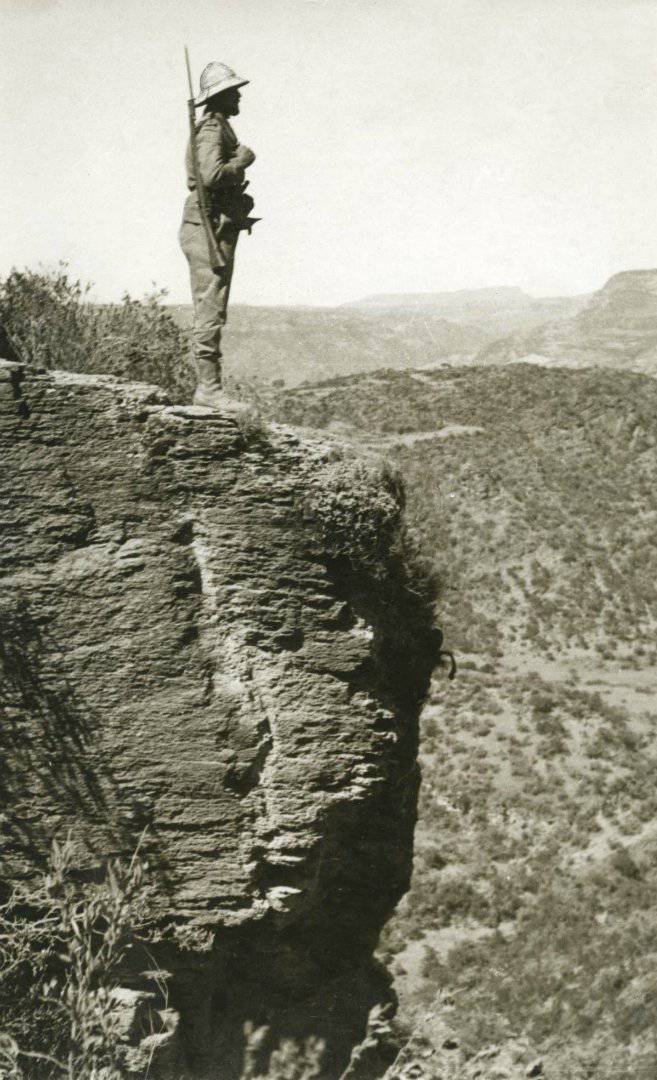
Italian watch
Results
Italy received a large colony, the core of its colonial empire, a strategic bridgehead, through which it was possible to fight for the expansion of influence in Africa and threaten the main imperial communications of Britain that went through Gibraltar, Suez, Red Sea and further to Persia, India, Hong Kong , Singapore, Australia and New Zealand. This was one of the main reasons for the war between Britain and Italy, which began as early as 1940.
Italy celebrates victory
A partisan war began in Ethiopia itself, which continued until the liberation of the country in the spring of 1941. Thus, the Italians lost during the military campaign of 54 thousands killed and wounded, and during the subsequent occupation and struggle against the partisans more than 150 thousands of people. The total losses of Ethiopia during the war and the subsequent occupation are more than 750 thousand people. The total damage to the country was 779 million (official Ethiopian government data provided at the Paris Peace Conference 1947 of the year).
Partisans have become a major problem of the Italian authorities. Many areas of the country have not yet "pacified", the resistance continued. Therefore, in early Italy, 200 had to keep thousands of soldiers, 300 planes in Ethiopia. It was formed the highest command of the Air Force of the Italian Eastern Army with the center in Addis Ababa. The colony was divided into four sectors: the northern - the main air force bases were located in Massawa, the eastern - in Assab, the southern - Mogadishu and the western - Addis Ababa. A network of auxiliary airfields was created throughout the territory. A belt of air bases was created around the capital with a radius of up to 300 km, which made it possible to quickly concentrate forces on the threatened direction. So, in the fight with the races Imru was involved around 250 aircraft. In addition, in the second half of 1936, the Italian command had formed mobile columns, mostly motorized, which were supplied and supported by aircraft from the air. They had to quickly respond to the uprisings and fight the partisans. Thus, Ethiopia and after the occupation continued to resist and gave Italy a lot of problems.
Sources:
A. Bartnitsky, I. Mantel-Nechko. History of Ethiopia // http://www.e-reading.club/bookreader.php/4404/Bartnickiii,_Mantel'-Nechko_-_Istoriya_Efiopii.html.
Second Italian-Ethiopian War. Part of 1 // http://humus.livejournal.com/2498734.html.
Second Italian-Ethiopian War. Part of 2 // http://humus.livejournal.com/2500740.html.
Korsun NG The Italo-Abyssinian War of 1935-1936 M., 1939 // http://militera.lib.ru/h/korsun_ng6/index.html.
Tsypkin G.V., Yagya V.S. History of Ethiopia in the new and modern times. M., 1989.
Shtal A.V. Small wars 1920-1930-s. M., 2003 // http://militera.lib.ru/h/shtal/index.html.
- Alexander Samsonov
- Second Italian-Ethiopian War
How Italy conquered Ethiopia
Italian armed forces to the beginning of the invasion of Ethiopia
Battle of Abyssinia
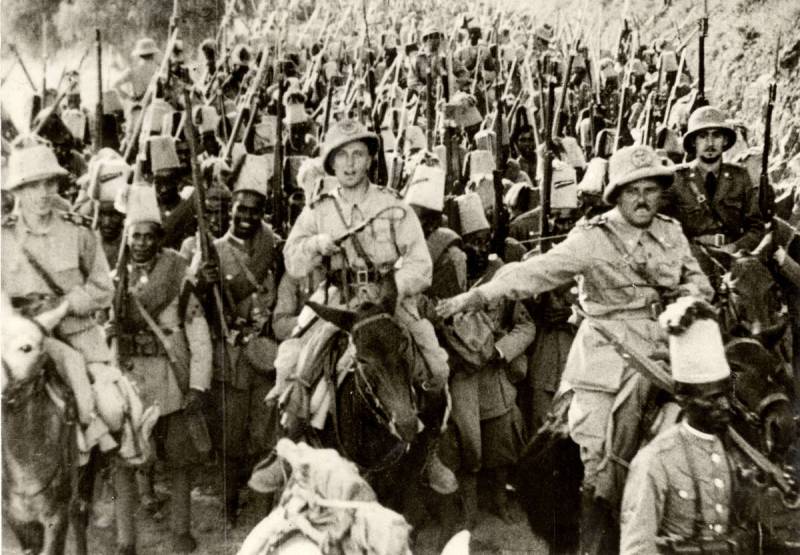
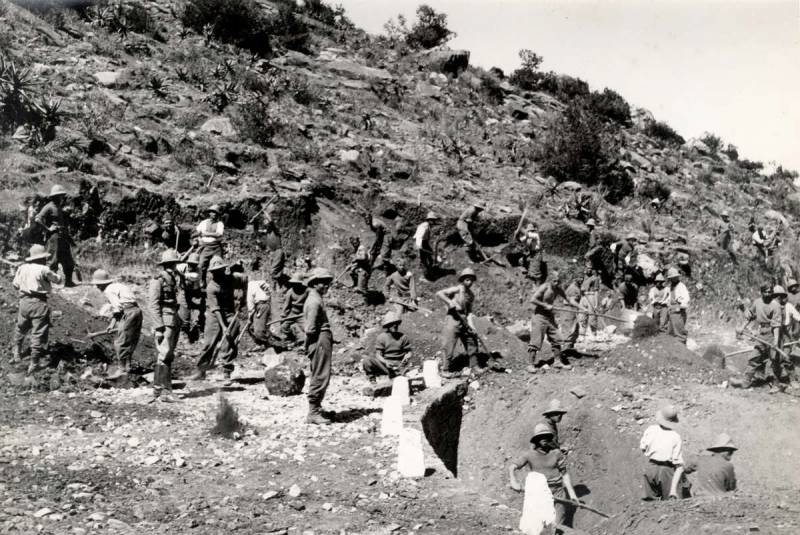
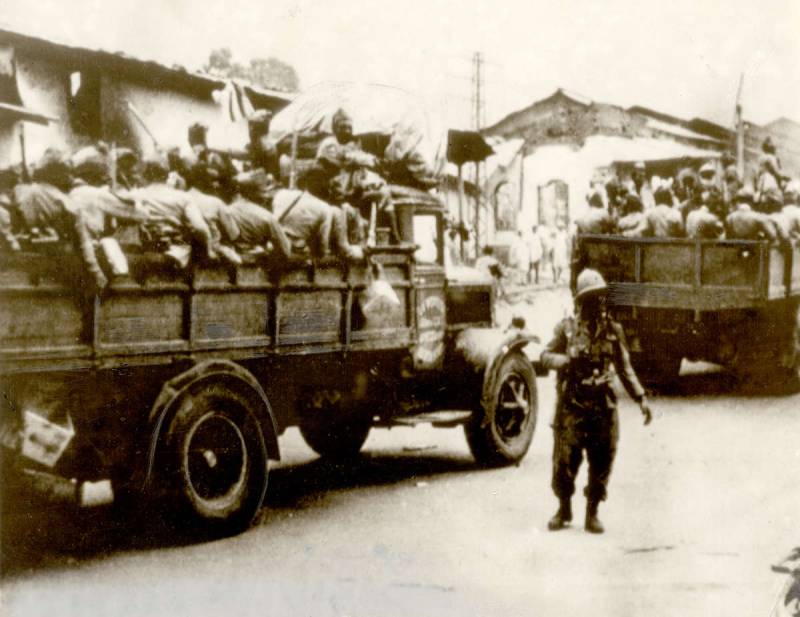
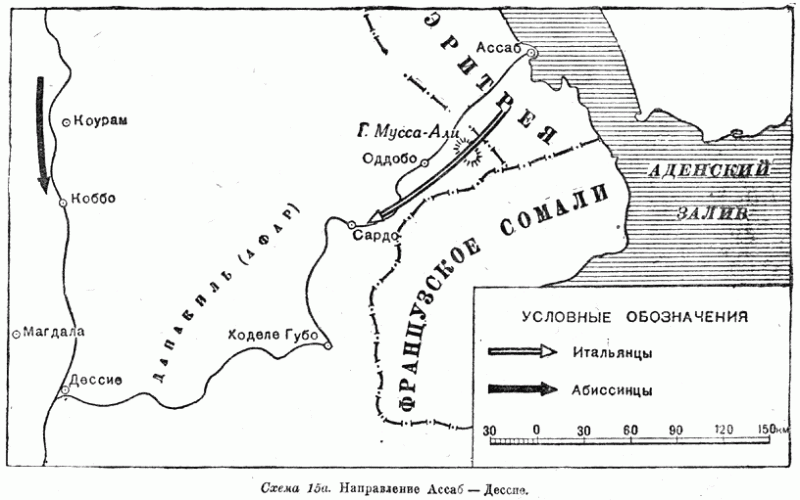
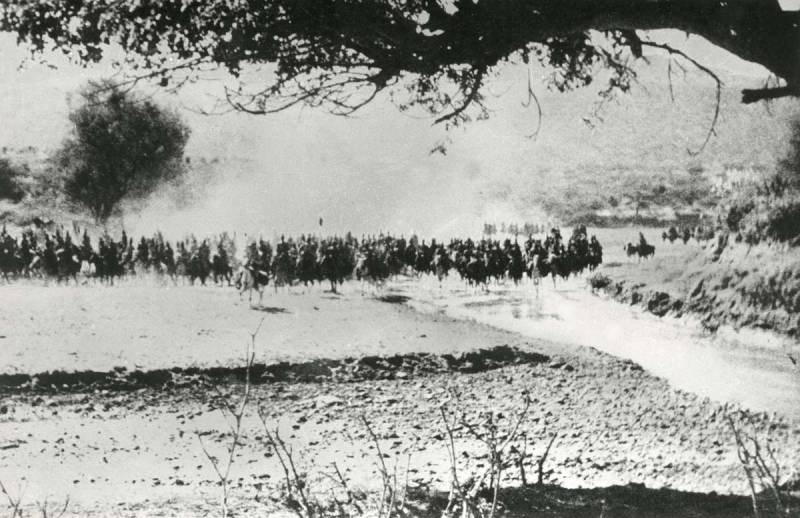

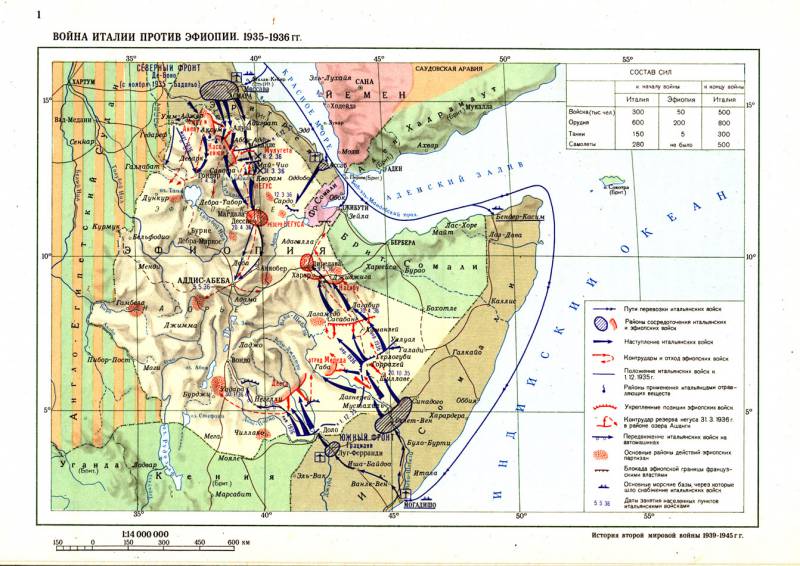
Information